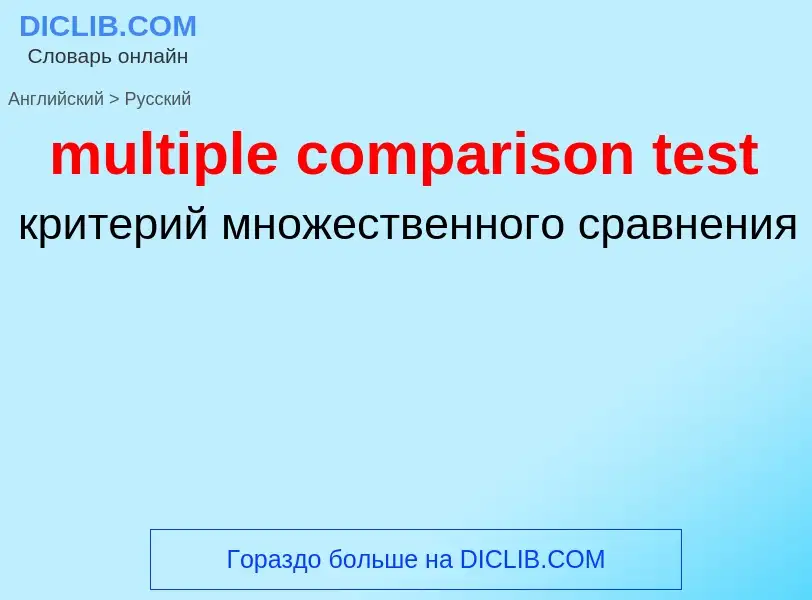Перевод и анализ слов искусственным интеллектом ChatGPT
На этой странице Вы можете получить подробный анализ слова или словосочетания, произведенный с помощью лучшей на сегодняшний день технологии искусственного интеллекта:
- как употребляется слово
- частота употребления
- используется оно чаще в устной или письменной речи
- варианты перевода слова
- примеры употребления (несколько фраз с переводом)
- этимология
multiple comparison test - перевод на русский
2) критерий сравнения
общая лексика
критическая разность
общая лексика
критерий сравнения
математика
множественное сравнение
общая лексика
многокорпусный
многоэлементный
[self'pauəd]
общая лексика
безбатарейный
Смотрите также
прилагательное
специальный термин
с автономным источником питания
общая лексика
сложный нейрон (состоящий из группы нейронов)
кратные единица
Определение
Википедия
In statistics, Duncan's new multiple range test (MRT) is a multiple comparison procedure developed by David B. Duncan in 1955. Duncan's MRT belongs to the general class of multiple comparison procedures that use the studentized range statistic qr to compare sets of means.
David B. Duncan developed this test as a modification of the Student–Newman–Keuls method that would have greater power. Duncan's MRT is especially protective against false negative (Type II) error at the expense of having a greater risk of making false positive (Type I) errors. Duncan's test is commonly used in agronomy and other agricultural research.
The result of the test is a set of subsets of means, where in each subset means have been found not to be significantly different from one another.
This test is often followed by the Compact Letter Display (CLD) methodology that renders the output of such test much more accessible to non-statistician audiences.


![A double decker [[Sydney Trains B set]] A double decker [[Sydney Trains B set]]](https://commons.wikimedia.org/wiki/Special:FilePath/B set departing Panania 20180919 01 (Nimed).jpg?width=200)
![Perth]] and the mining town of [[Kalgoorlie]] in [[Australia]]. Perth]] and the mining town of [[Kalgoorlie]] in [[Australia]].](https://commons.wikimedia.org/wiki/Special:FilePath/Prospector new railcar, Toodyay.jpg?width=200)
![Elektrichka on [[Yaroslavskiy Rail Terminal]], Moscow Elektrichka on [[Yaroslavskiy Rail Terminal]], Moscow](https://commons.wikimedia.org/wiki/Special:FilePath/RZD ED4M-0103 Moskva-Yaroslavskaya.jpg?width=200)
![RABe 523]] is the most common multiple units on Switzerland, used by almost every S-Bahn. RABe 523]] is the most common multiple units on Switzerland, used by almost every S-Bahn.](https://commons.wikimedia.org/wiki/Special:FilePath/SBB RABe 523 FLIRT der Zuger S-Bahn.jpg?width=200)
![A [[N700 Series Shinkansen]] set in June 2008 A [[N700 Series Shinkansen]] set in June 2008](https://commons.wikimedia.org/wiki/Special:FilePath/Shinkansen N700 z15.jpg?width=200)

![Simon's Town station]], [[Cape Town]] Simon's Town station]], [[Cape Town]]](https://commons.wikimedia.org/wiki/Special:FilePath/Wikimania 2018, Cape Town (P1050609).jpg?width=200)
